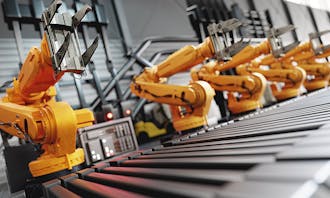Are you doing enough to attract young talent?
2021-05-04
3 min read
Baby boomers are retiring at a rapid pace and manufacturers will have to consider how to replace the know-how that these experience workers will take with them. Millennials and Gen Z workers are highly skilled at digital technologies and therefore ideally positioned to close the skills gap and power the digital revolution that is investing the sector. But are organisations doing enough to meet their expectations?
The manufacturing sector is reaching a record high. For the first time in history, its workforce comprises five different generations — the Silent Generation, Baby Boomers, Gen X, Millennials and Gen Z.
However, as the older generations retire, younger recruits are called to fill in the gaps and replace co-workers with decades of hands-on experience. At the same time, manufacturing itself is undergoing a drastic shift, turning from a labour-intensive sector to the heavily digitalised landscape of Industry 4.0. The loss of experienced workers, coupled with the necessity to introduce new skillsets on the factory floor, are at the core of the skills gap that is currently plaguing the sector.
But how is this possible? After all, Millennials and Gen Z are known for their digital literacy, a consequence of early exposure to technology, and therefore seem perfectly positioned to usher manufacturing into a new era of increased automation.
However, this generation seem to retain a misconception that manufacturing processes are repetitive, conventional, lacking space for creativity and critical thinking, and therefore not a very exciting career path. As a result, manufacturers struggle to reach the very people who might help in their journey towards digitalisation.

The cool factor
To attract and retain young talent, manufacturers must change the general perception of the industry, highlight opportunities to work with innovative technologies, as well as provide an exciting learning environment.
Overly bureaucratic organisations should try to simplify their processes and aim at lean, intuitive, efficient operations. For generations born with an overload of information at their fingertips, and technology that simplifies daily tasks and provides rapid feedback, an excess of bureaucracy might be off-putting and reinforce the perception of manufacturing as a stuffy industry. Dynamic, agile companies have more chances of eliciting the interest of candidates who thrive in a stimulating and fast-paced environment.
Another thing to consider is the importance of company values. Research shows that younger generations expect companies to have a social conscience and are more likely to feel emotionally connected to their job if they think that the company has a worthwhile mission. But company values can’t be just another landing page on the corporate website, they have to be something that informs daily processes and permeates the identity of the company.
In manufacturing, there’s no lack of opportunities to commit to worthwhile causes. For example, companies might consider embracing environmentally-friendly production methods, championing STEM educational initiatives, and promoting programmes to proactively tackle the gender pay gap.
Lastly, with so many generations under the same roof, it’s important to create an environment where the knowledge transfer among people with different skillsets is facilitated. For example, research from Boston Consulting Group shows that millennials value first-hand experience more than academic knowledge, so they might appreciate the opportunity to learn from baby boomers who spent decades working on the factory floor. On the other hand, older generations might benefit from learning digital skills from younger co-workers. In this case, reverse mentoring could be a great strategy to increase the level of digital literacy among the rest of the workforce.
Millennials and Gen Z will be vital in tackling some of the most pressing manufacturing challenges, and recruiting and retaining young talent must be a priority. By keeping an open mind to the needs and expectations on younger generations, manufacturers can futureproof their organisations and set themselves up for success.



